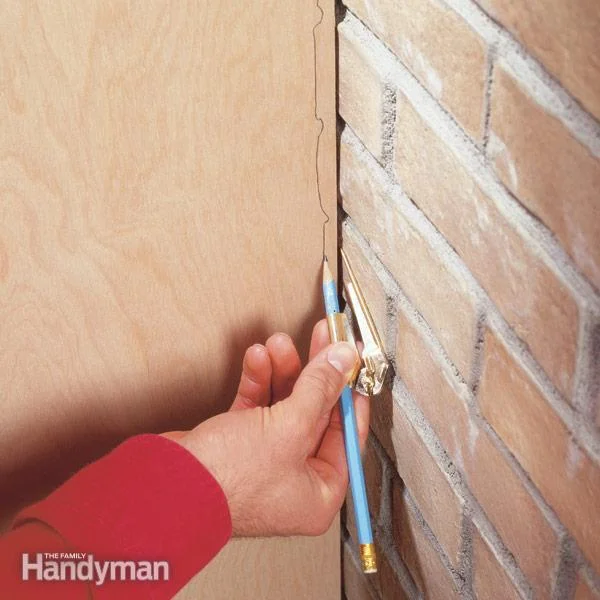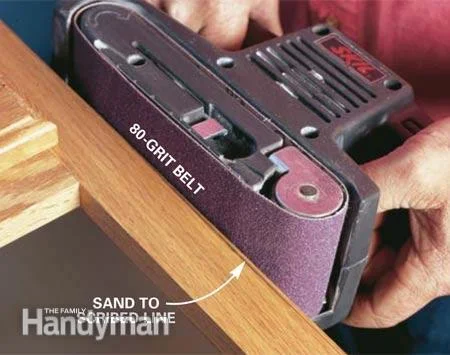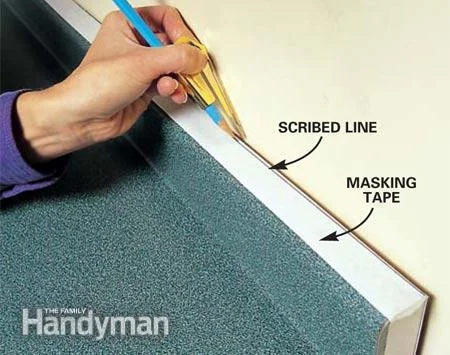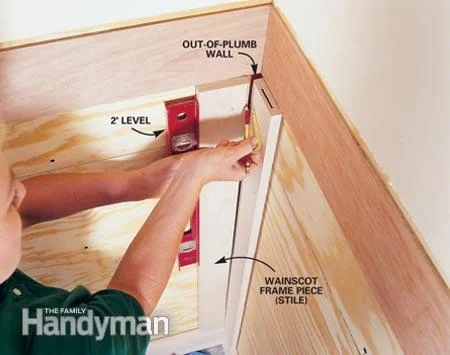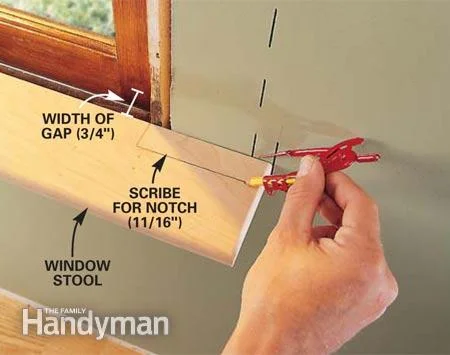If you need to transfer odd shapes when installing cabinets, counter-tops, or other built-in woodwork, then you need to learn how to Scribe. This article will show you how. You will need to get a compass for this project.
Cabinets
Slide shims under the base until the top is level and the sides are plumb. Slide your carpenter's pencil along the side to scribe a line on the cabinet.
Sand to the Line
Sand to the line with a belt sander. Tilt the sander as you go along to bevel the wood for a tighter fit. Remove wood from the non-visible side.
Countertops
Slide the counter to the wall. Make sure the countertop is parallel to the front of the cabinets. Adjust distance between compass point and pencil tip to equal the widest gap between the wall and the countertop. Then tighten the thumbscrew. Then repeat the process of the step above.
Wainscoting
Fit a board to a corner that isn't plum, and use a level to hold it plumb. Set the compass for the widest gab and scribe the line. Then saw or plane the wood to the outside of the line
Shelving
Slide the shelf into place, keeping the long edge tight to the wall. If it fits between two walls, cut it around 0.5" too long and set it at an angle. Then run a pencil along the wall to scribe a line. Saw along the line then repeat on the opposite end of the shelf.
Window Stools
Notch the window stool and set in place. Measure the gap between the back edge of the stool and window, and set your compass for 1/16" less than the measurement. Run it along the wall behind each end of the stool. File away the material to the lines.
Uneven Edges
Scribing will help fit a cabinet, paneling or molding to irregular surfaces like brick. First plumb the edge of whatever your scribing, then set the compass a little wider than the widest gap and scribe. Make sure to hold the compass perpendicular.

